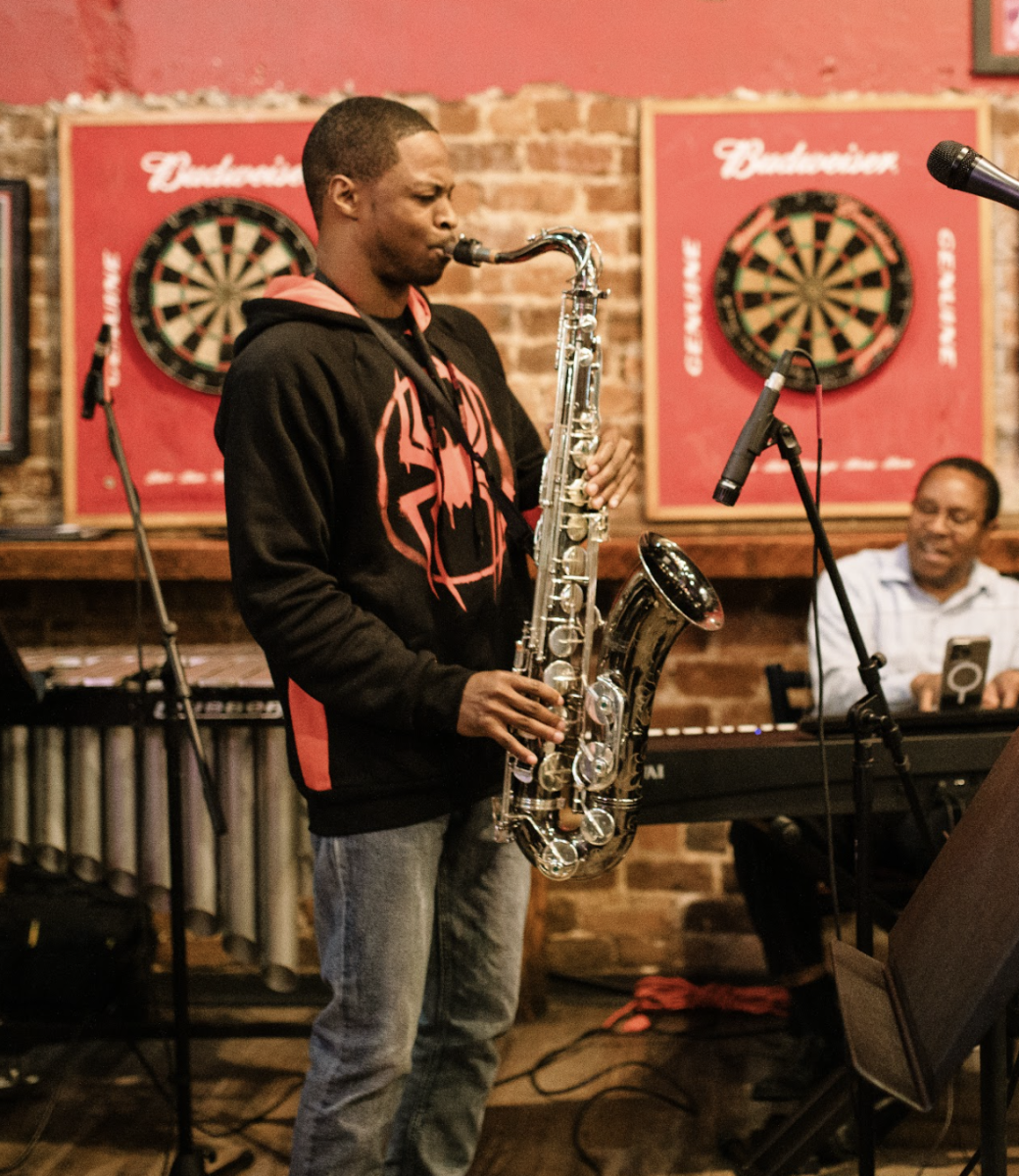Jazz music is a prominent staple in African American culture as well as in the music industry.
One of the ways in which GC shows its appreciation and support for the jazz industry is by hosting annual Jazz Jam sessions.
These Jazz Jam sessions are a way for students, faculty and local community members to come together and celebrate a shared love for jazz music. They will be held at Amici in downtown Milledgeville from 7-9 p.m. on Feb. 27, March 26 and April 23.
Don Parker, music department chair and professor at GC, thinks that the sessions allow the jazz groups to work on their improvisations as well as work on their skills to communicate with the audience.
“These jazz sessions are essentially an extension of the classroom, and because they are small groups, this is probably the perfect environment for them to play in,” Parker said.
The majority of the restaurantwas filled with students and local community members, all excited to hear what would be played.
A group of GC faculty members kicked off this semester’s sessions on Jan. 30. They played a variety of jazz styles, ranging from upbeat to smooth pieces. At one point, one of the faculty members announced they would be playing a gentle gypsy jazz piece which was very smooth, slow and calming. The rest of the night was a mixture of bebop, smooth, gentle and traditional jazz styles, all performed by a variety of different musicians.
“I think it’s really beneficial for students to come out and hear something that they really don’t have much of an opportunity to experience anywhere else,” said Elizabeth Galloway, a senior music major.
She has been playing in the Jazz Jams for years and loves it because she thinks there is no other musical genre like it.
Jazz is a musical genre whose roots date back to the 19th century in New Orleans, Louisiana. According to Jazz Observer, its rich history came as a result of slaves coming to Congo Square, a community gathering place, to play their music. Slowly, more and more people from different backgrounds began to come together to play and share their music.
What began as a shared love of music slowly became a melting pot of sounds that combined and formed the distinct sound of jazz music. Today, New Orleans is known as the birthplace of jazz because the musical sound was first played in Congo Square.
Despite its long history, jazz music has continued to evolve and change with the times. What once began as a local African American pastime has developed into a rich blend of ragtime and blues.
While it is constantly evolving, over time, the question has been raised of whether jazz is a dying art.
“There’s a lot of us trying to keep it alive,” said Chris Enghauser, a double bass instructor at GC. “It’s alive on most college campuses and high schools, and there are still a lot of jazz artists.”
In its early years, jazz music was primarily played for people to dance to, but today, it is often something that people go to hear and see. A common misconception is that jazz has just one form, but that is not necessarily true.
Beneath the umbrella of jazz music, there are subgenres, which include bebop jazz, smooth jazz, swing and more.
Galloway thinks that jazz music has gone through many different genres over the years as more and more people have begun to put their own spin on it.
“My favorite jazz style is fusion because it’s really upbeat, fun and technically complicated,” Galloway said.
Despite its long history, jazz is still a genre of music that continues to appeal to a wide audience despite its various variations. If there is one thing that is certain, it is that jazz remains a prominent feature of the music industry.


